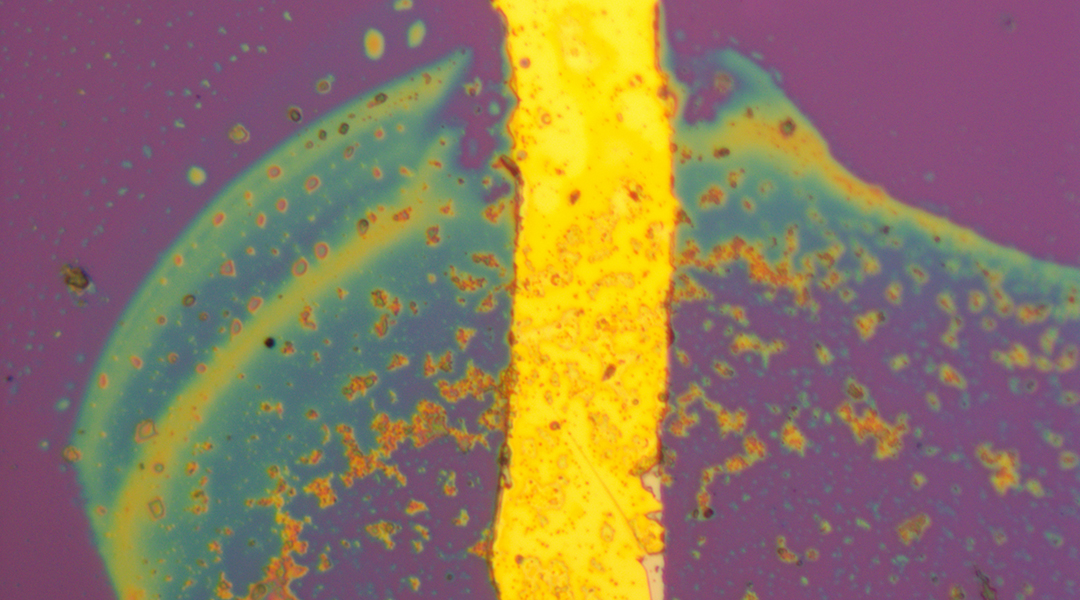Scientists have optimized nanodiamond sensors, with potential breakthroughs in electronics, medicine, and quantum tech.
Nanodiamond-based sensors are emerging as a leading tool for measuring temperatures on the nanoscale, where traditional thermometers and infrared cameras fall short due to their size limitations.
Measuring temperatures on such tiny scales is crucial in fields like microelectronics, biomedical research, and material science, where even slight fluctuations in temperature can impact device performance, cellular processes, or quantum systems.
“Sensors of this type are important because many interesting things happen at the nanoscale that can be thought about in terms of temperature, such as chemical reactions in a living cell or current passing through a transistor,” said Nathaniel Beaver, one of the study’s authors in an email. “It’s difficult to measure temperature at the nanoscale because you need a sensor that won’t perturb the system too much, and then also a way to get the temperature reading from that sensor.”
However, a key challenge with nanodiamond sensors has been their accuracy, which is affected by background magnetic fields that interfere with the sensor’s readings, complicating their use as they are nearly impossible to eliminate in real-world environments.
In a recent study published in Advanced Quantum Technologies, Beaver and his supervisor, Paul Stevenson, professor in the Department of Physics at Northeastern University, offer a new solution to this problem, using a “fight fire with fire” approach.
Nitrogen vacancy centers as sensors
Not only are nanodiamond sensors tiny and versatile, they are capable of measuring temperatures from near absolute zero (-273 degrees Celsius) to upwards of 300 degrees Celsius due to a defect in their crystal lattice called a nitrogen vacancy center–this is where a nitrogen atom sits next to a missing carbon atom in the crystal structure.
This creates a hole or a “vacancy” in the crystal that instead of being a problem, leads to some interesting quantum states involving electrons that exist near the defect.
“Nitrogen vacancy centers are impurities in diamonds,” explained Stevenson. “Normally, we think of impurities as something to avoid or suppress, but in our experiments, we think of the nitrogen vacancy center as an atom-sized sensor held in place and stabilized by the surrounding diamond.”
In a nitrogen vacancy center, the “hole” affects electrons in nearby atoms, causing them to behave in special ways, such as how they react to magnetic and electric fields. This gives the vacancy its unique properties, allowing it to detect small changes in temperature, making it a highly sensitive sensor.
“These defects are fluorescent [meaning they emit light], and this fluorescence changes depending on magnetic field or temperature,” continued Stevenson. “[This] is how we use the nitrogen vacancy centers as sensors; we can watch how the fluorescence level changes to infer the local magnetic field or temperature.
“Usually, there isn’t a simple way to separate out whether this response is from magnetic field or temperature. However, by suppressing the response to magnetic fields, we know that the signal is directly related to temperature.”
But the vacancy isn’t sensitive to only temperature; it also reacts to surrounding magnetic fields, which cause interference and reduce accuracy. Given that magnetic fields are ubiquitous — everything from the Earth’s own magnetic field to the stray magnetic fields generated by nearby electronic devices can interfere — this presents a problem.
Applying an oscillating magnetic field
If you can’t eliminate background magnetic fields, how do you get around them?
The team’s solution was quite simple: apply an oscillating magnetic field–one that changes direction — to the sensor’s core — targeting the nitrogen vacancy– to neutralize the effects of unwanted magnetic interference.
This approach, previously applied to large diamond crystals, involved manipulating the amplitude and frequency of the applied magnetic field to reduce the vacancy centers’ sensitivity to background magnetic fields.
“The technique we use does not require extra time or expensive equipment, all we needed to add to the lab equipment was another microwave generator,” said Beaver.
The researchers’ detailed quantum mechanical analysis followed by an experimental study revealed that the oscillating magnetic field worked most effectively at high frequencies — specifically on the megahertz scale, which is millions of cycles per second — to neutralize interference from stray magnetic fields.
This improves the sensor’s performance by modifying the electrons’ behavior, making them less sensitive to external magnetic noise but still highly responsive to temperature changes.
They were able to make the magnetic field response of the nitrogen vacancy centers up to seven times weaker under the best conditions. This reduction helps the sensor focus more precisely on measuring temperature changes, minimizing the impact of outside magnetic fields.
“The main thing we showed is that we can use tiny diamonds as nanoscale temperature sensors, and we can do it in a way that is more sensitive to temperature and less sensitive to magnetic fields,” said Beaver. “The nanodiamonds are inexpensive and very small (about 100 nm in diameter) so they can be used in a lot of different ways.”
Towards practical applications
These improved nanodiamond sensors have potential applications in various fields, including studying fundamental aspects of microscopic thermodynamics, where quantum effects on properties like heat capacity and conductivity become significant at the nanoscale.
They also offer practical uses in testing devices that have become miniaturized. However, the researchers acknowledge that the current setup is still energy-intensive and needs further optimization before it can be widely used.
“We’d like to keep pushing this towards being a practical, routine way to sense and image temperature,” Stevenson concluded. “Right now, we use a lot of power for the radiofrequency and microwave excitations; we’re working on new ways to control nitrogen vacancy centers which are more efficient and should hopefully bridge the gap between lab-based experiments and sensors which can be used in the field.”
Reference: Nathaniel M. Beaver and Paul Stevenson, Selective Temperature Sensing in Nanodiamonds Using Dressed States, Advanced Quantum Technologies (2024). DOI: 10.1002/qute.202400271












+ There are no comments
Add yours